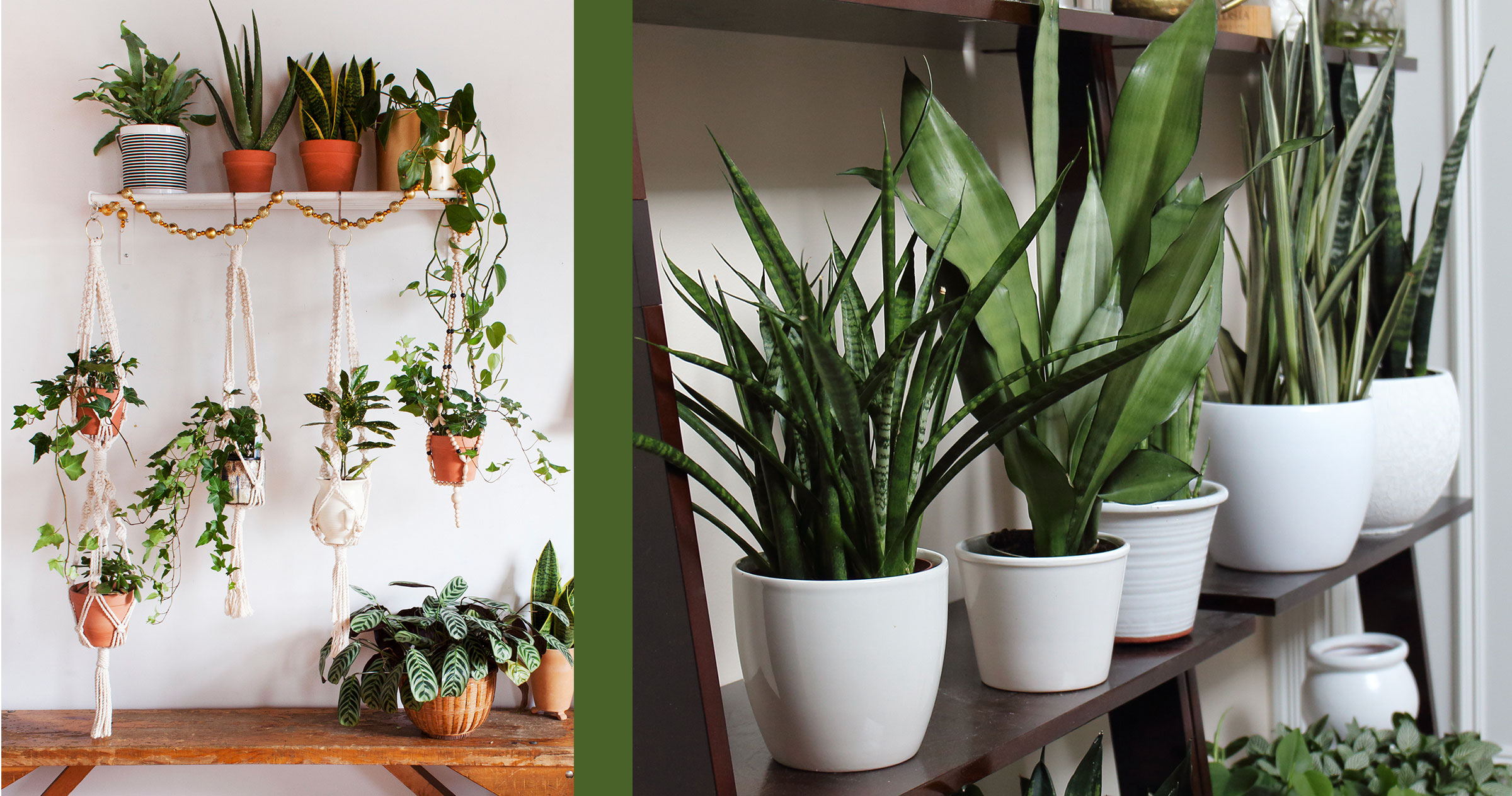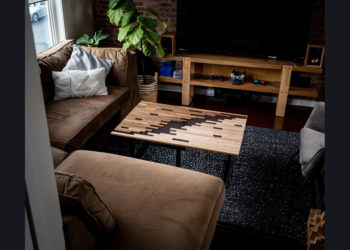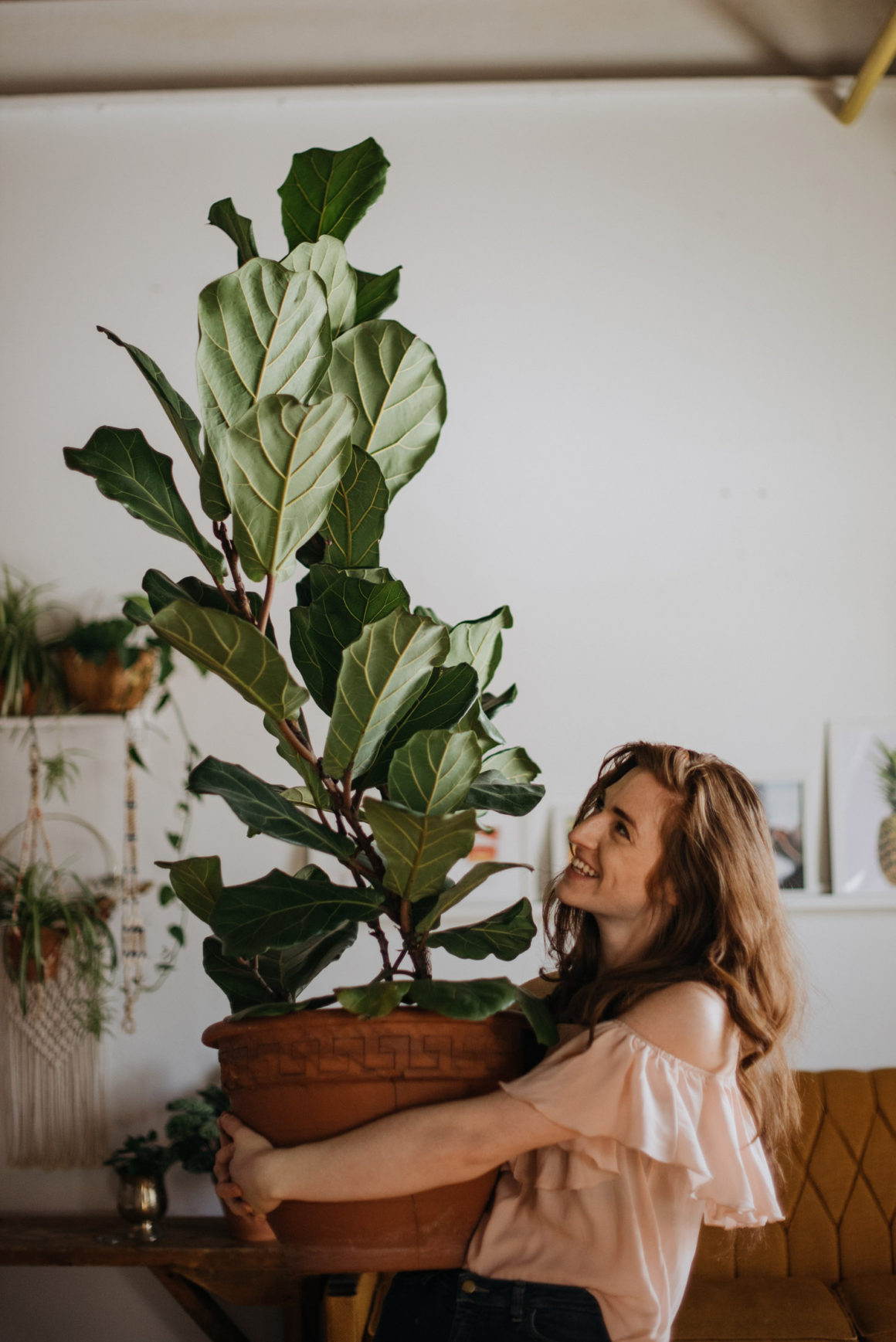
Jenny Morris found an abandoned Pothos plant when she moved into her first apartment years ago in Montreal. “I saw one vine desperately reaching for the window and had to save it,” says Morris, Plantbaby Studio’s founder/owner.
Her love and knowledge of houseplants started there and grew. She now helps others choose and maintain indoor greenery with online workshops and Toronto-area popups.
The cultivation of indoor plants—popular in the 1970s—is being embraced anew. “They (plants) give people who choose to delay or forego traditional home ownership, marriage or starting a family something beautiful to look after,” Morris suggests. “And they provide urban dwellers with some connection to Nature.”
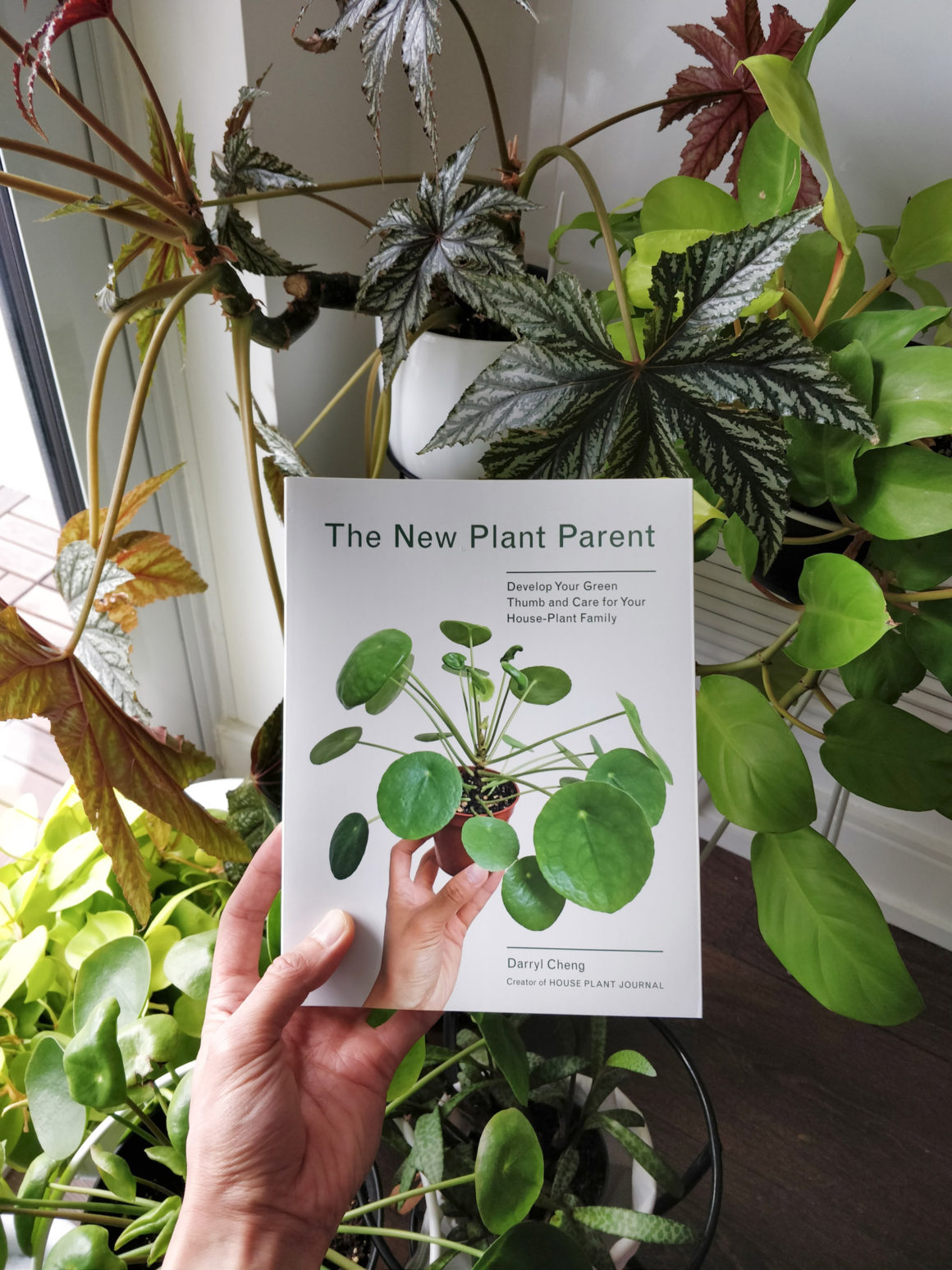
Virtually every design photo these days features greenery as we welcome more of the outdoors into our homes. A return of Mid-century Modern decor has many opting for monstera (Swiss cheese) and rubber plants.
“Instagram has spurred interest,” adds Darryl Cheng, who shares his passion through his online House Plant Journal and book, The New Plant Parent. “You don’t have to wait for visitors to admire your plants. You can show them off online.”
Cheng became enthralled with plants after his mother asked for help. “I couldn’t understand why a superb gardener was challenged by houseplants,” he recalls. “I discovered basic information was lacking.”
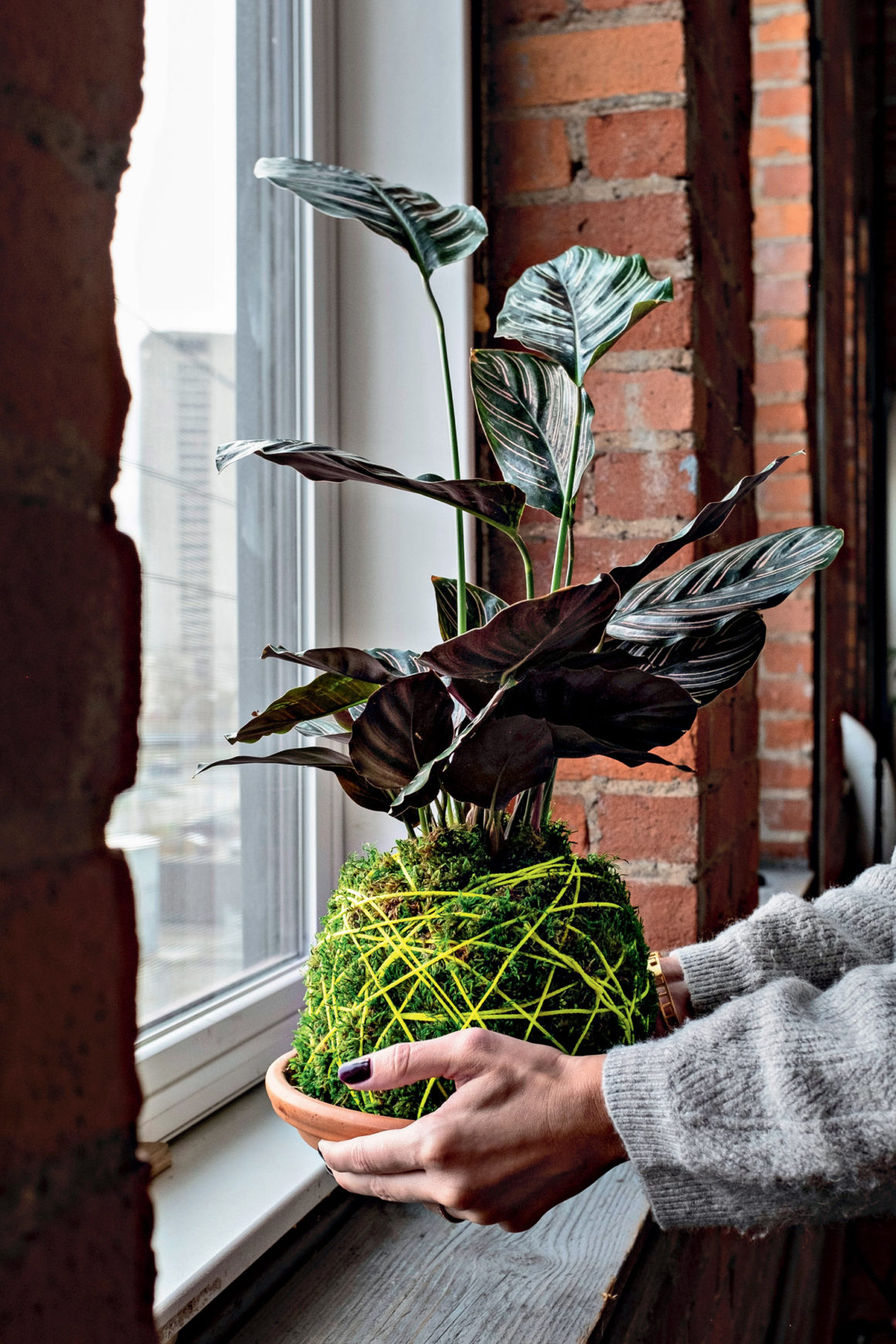
Photos by Heather Saunders Photography 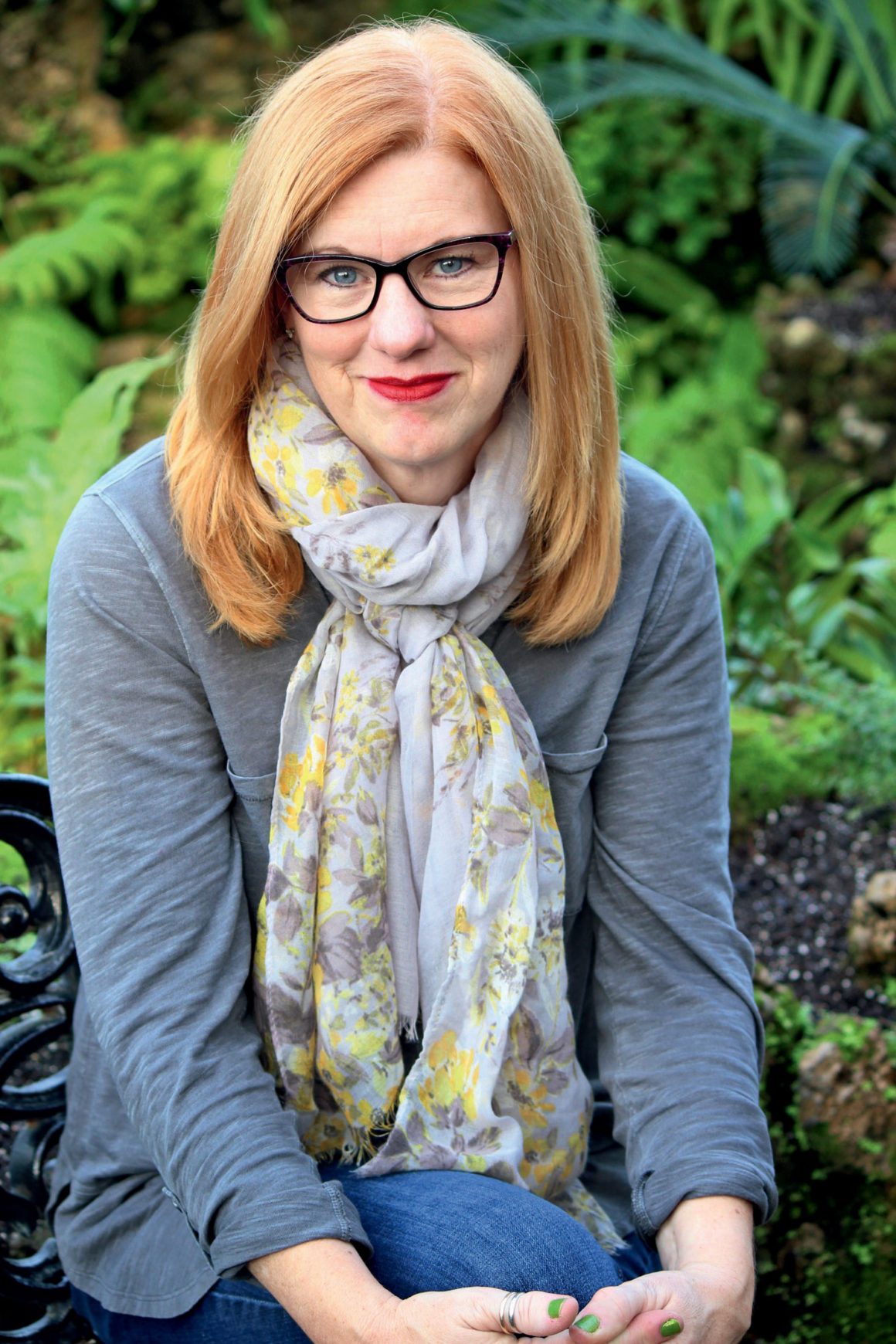
Interest has burgeoned since North Americans began spending more time at home this year. “It’s easy for a collection to get out of control,” warns Lisa Eldred Steinkopf, who owns nearly 1,000 plants. “Start with a few and see how much time and effort they need.”
Her latest book, Houseplant Party, contains practical, fascinating information for beginners. She encourages starting with a Philodendron, Pothos or Dracaena trifasciata (snake plant)—all hardy varieties—to experience the joy of successful cultivation.
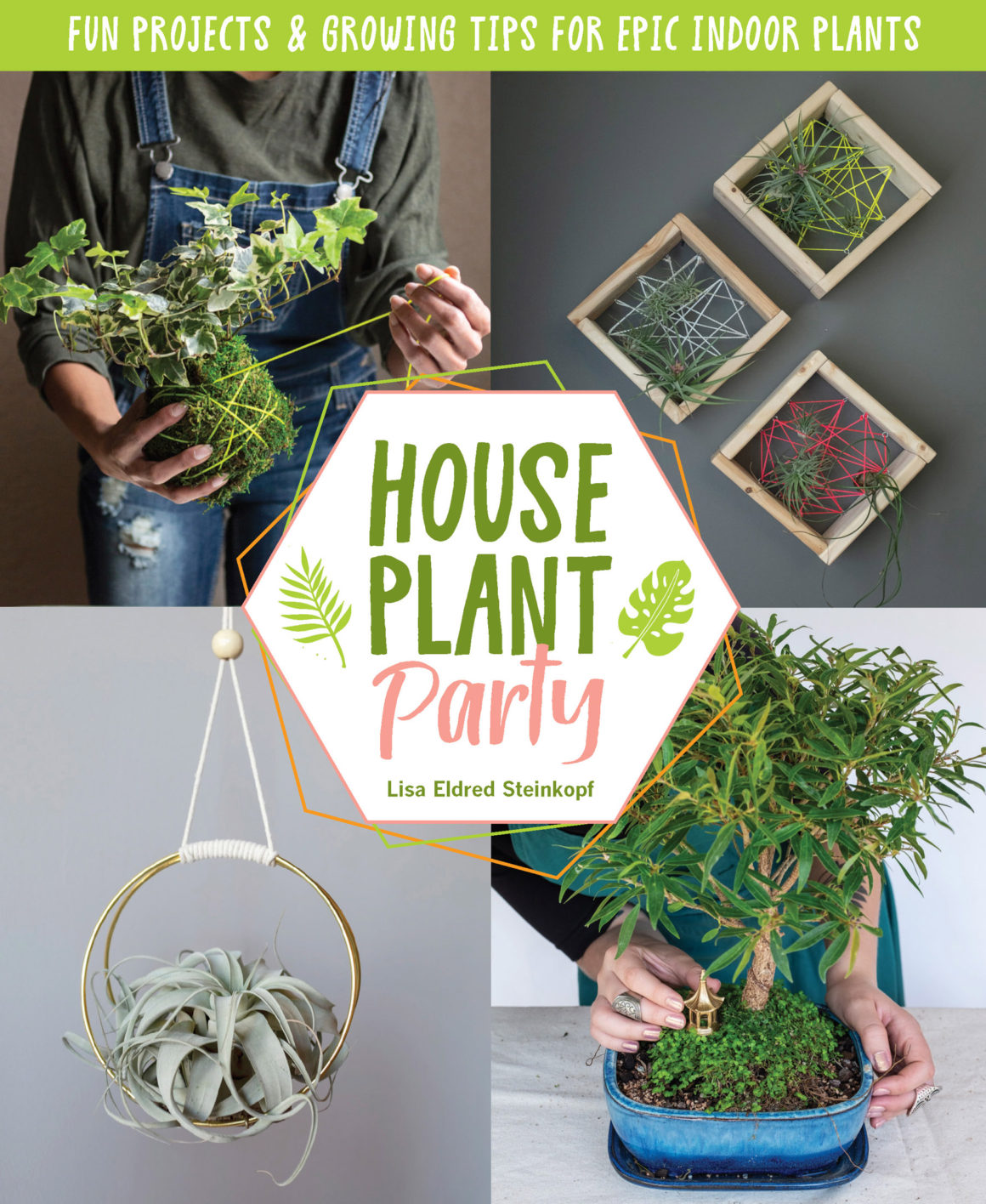
Morris had 35 plants at last count. “Consider your lifestyle,” she advises. “If you travel often, you’re better off with cacti or succulents that can dry out completely between waterings.”
Her current favourite, the fiddle-leaf fig, is a design world darling now. “They can be challenging, but if you give them bright, indirect light, preferably from a west- or south-facing window and allow them to dry out about halfway between waterings, they’re usually happy.” Otherwise, she prefers low-light/minimal-care plants and varies their display with hangers, stands and side tables.
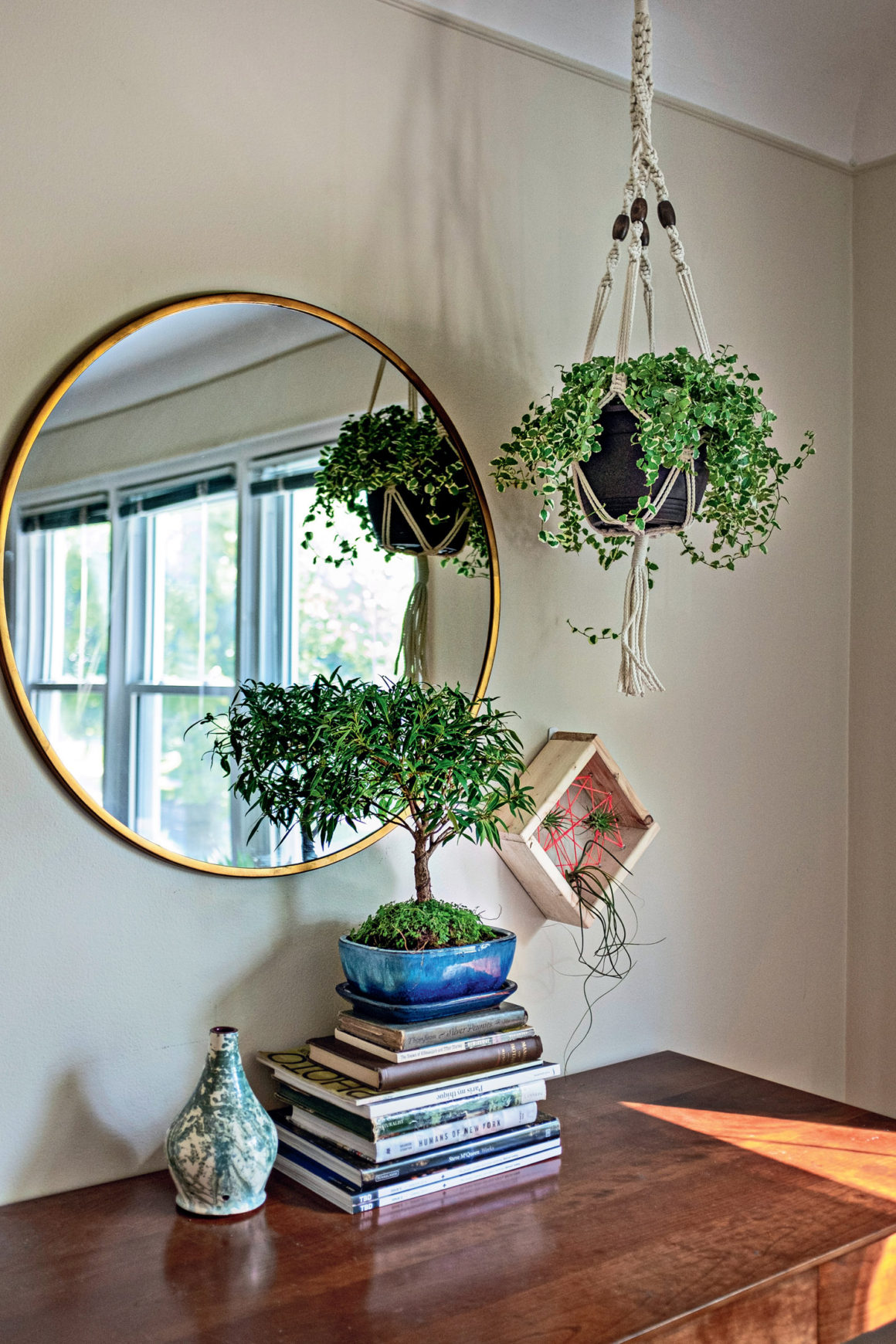
Macramé plant hangers are back in vogue, and make great DIY projects. Author Lisa Eldred Steinkopf also suggests creating small wooden frames to display air plants as living art. 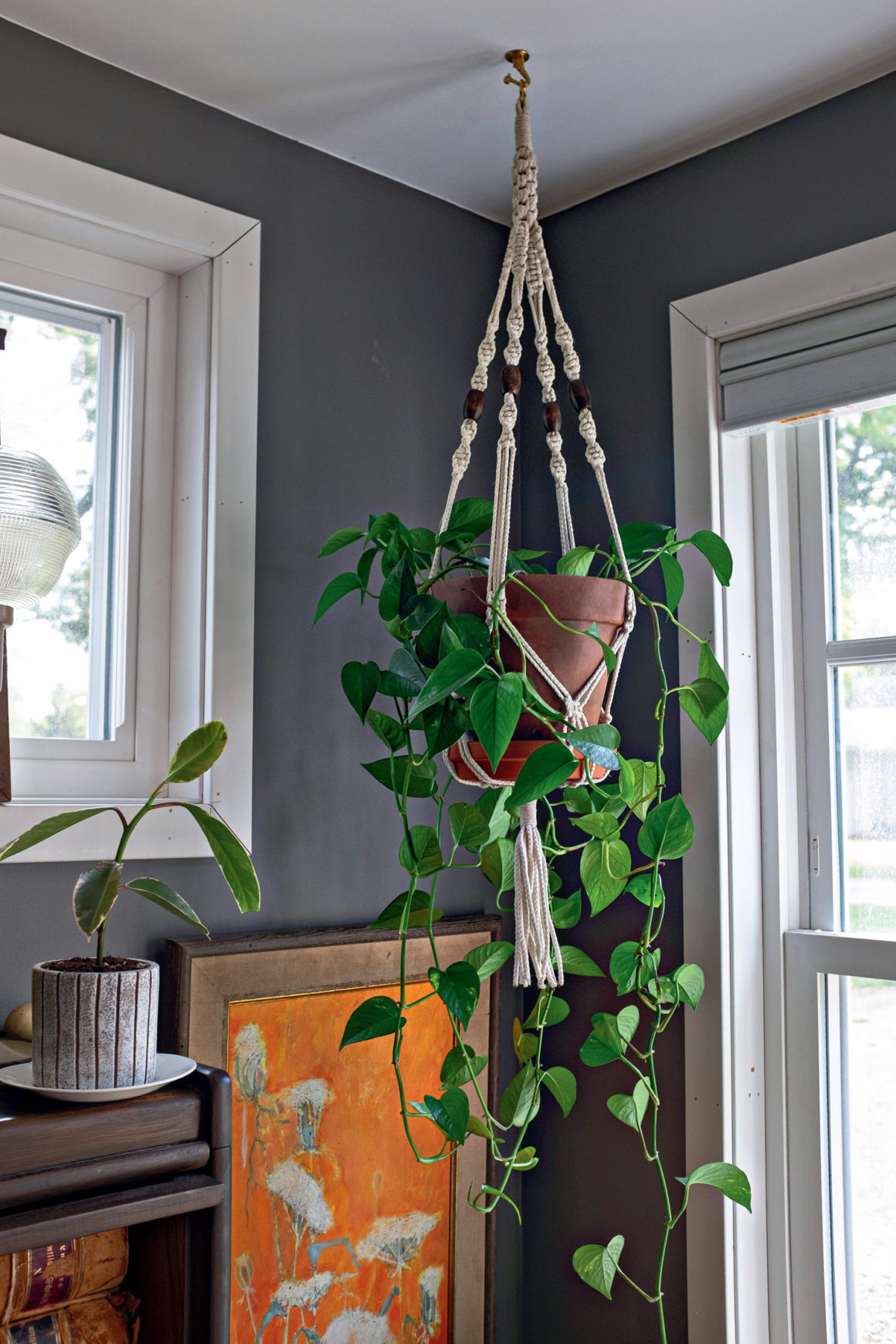
Photos by Heather Saunders Photography
Experts agree that the primary consideration should be the amount of light a specific plant requires to thrive. Direct light with sunrays hitting a plant for hours is ideal for cacti and succulents. “You might need sheer curtains to diffuse that light for other plants or it can burn their leaves,” Morris warns, adding that bright, indirect light suits the majority of houseplants.
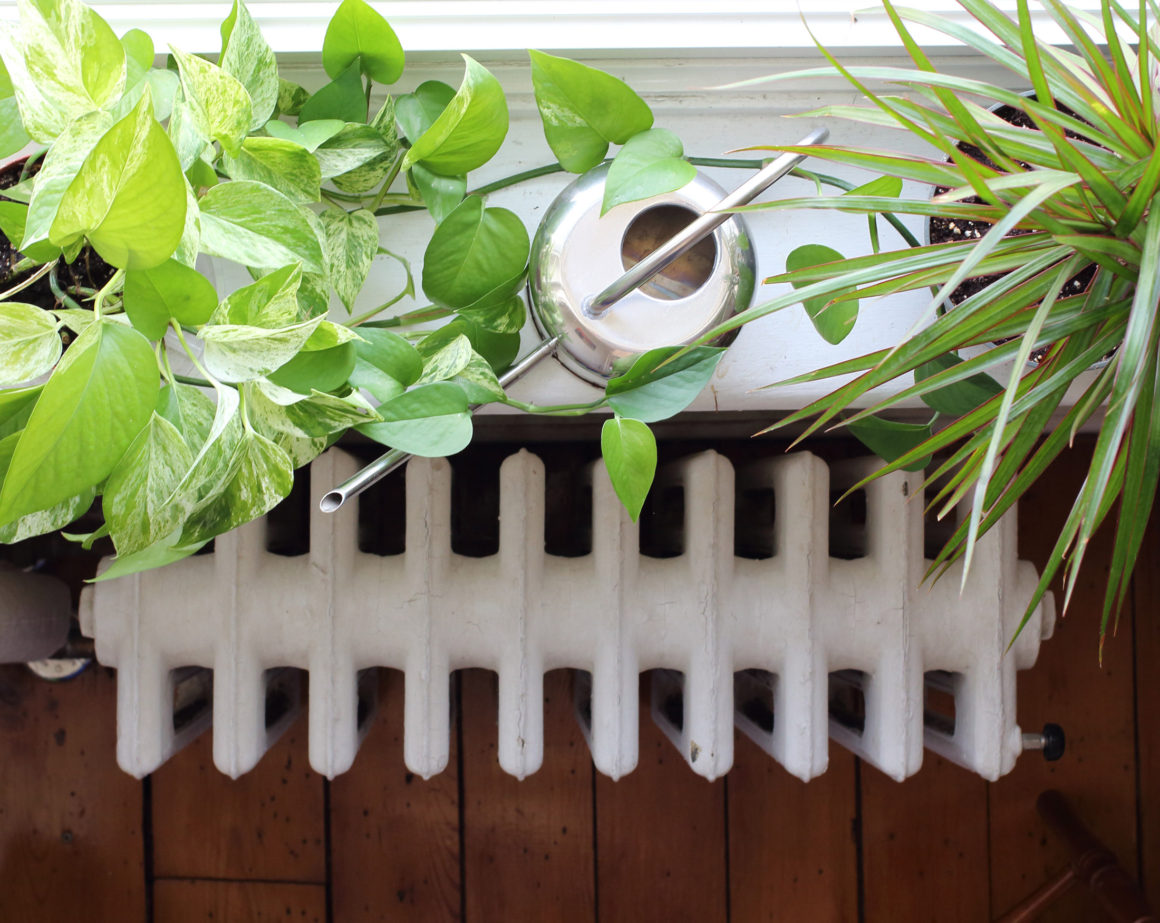
Photos by Darryl Cheng 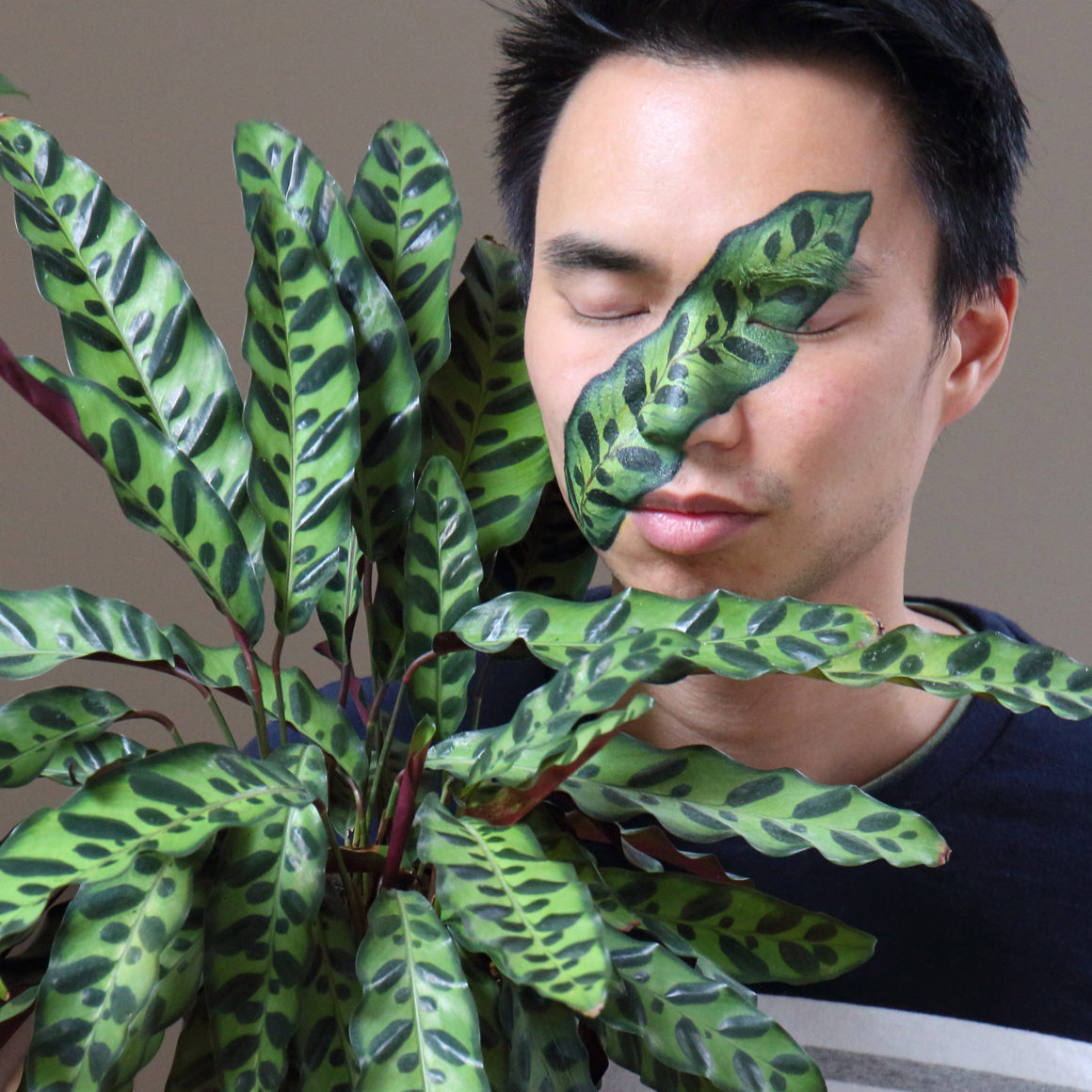
Of course, being an engineer, Cheng uses a light meter to gauge the exact amount of sun in each window and the solarium of his Toronto apartment. “I know the best available spot for each of my approximately 100 plants.” Cast-iron plants and peace lilies are low-light options. “As long as they’re within a window’s range, they’ll likely keep their shape,” he says.
Snake plants endure low-light situations, but won’t flourish under those conditions. “They’re from Africa and want full sun,” Steinkopf notes.
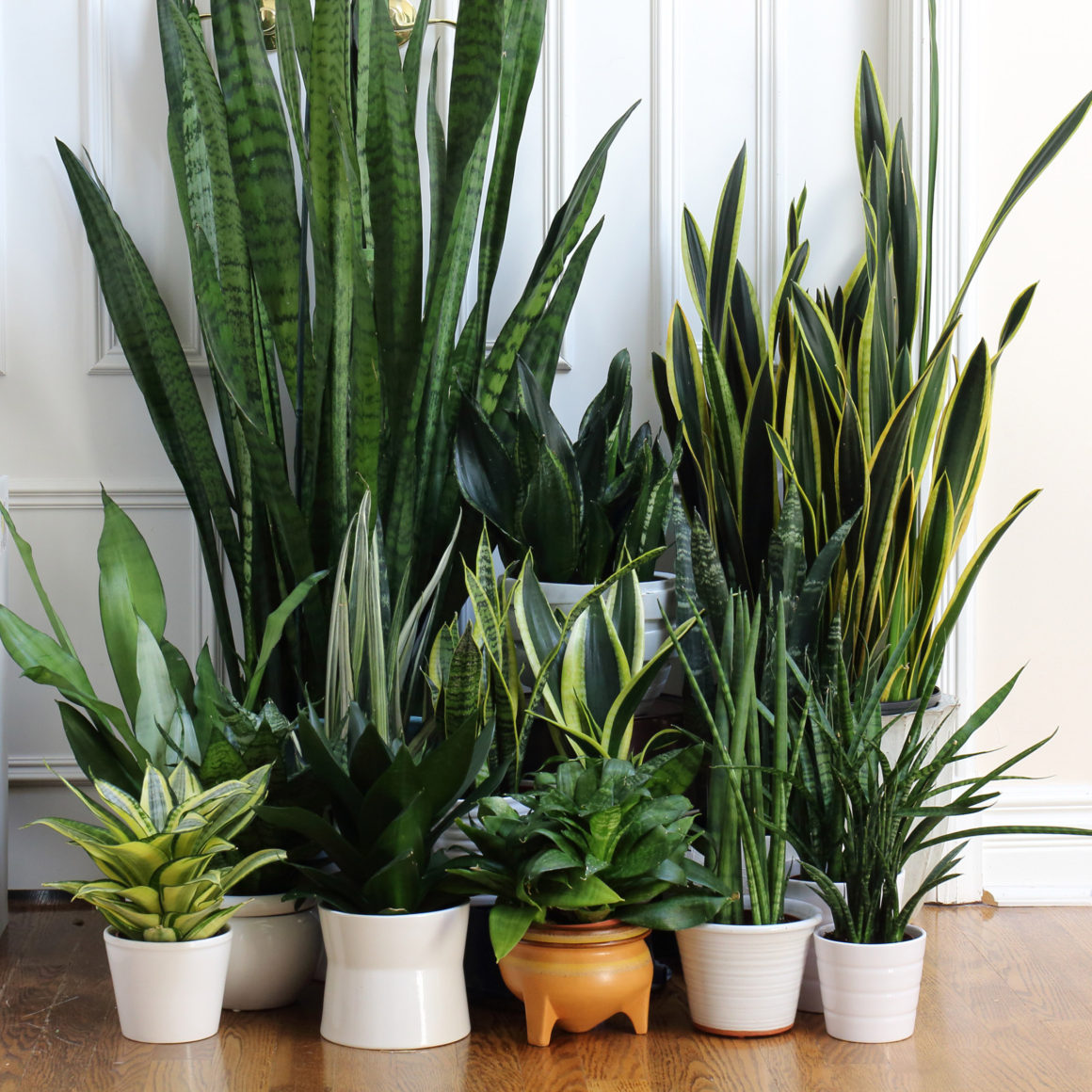
Photo by Darryl Cheng
Artificial lighting expands options. “I have a maidenhead fern in the middle of my living room with its own grow-light system,” Cheng says. “The new LED grow-lights are inexpensive, aesthetically pleasing, and work well for tropical foliage.”
Watering an entire plant collection on the same day might be doing the plants a disservice. Cacti and succulents prefer to dry out between waterings. Most low-light varieties like to partially dry out. Tropical plants want consistently even moisture without over-saturation. Some like to dry out completely between waterings.
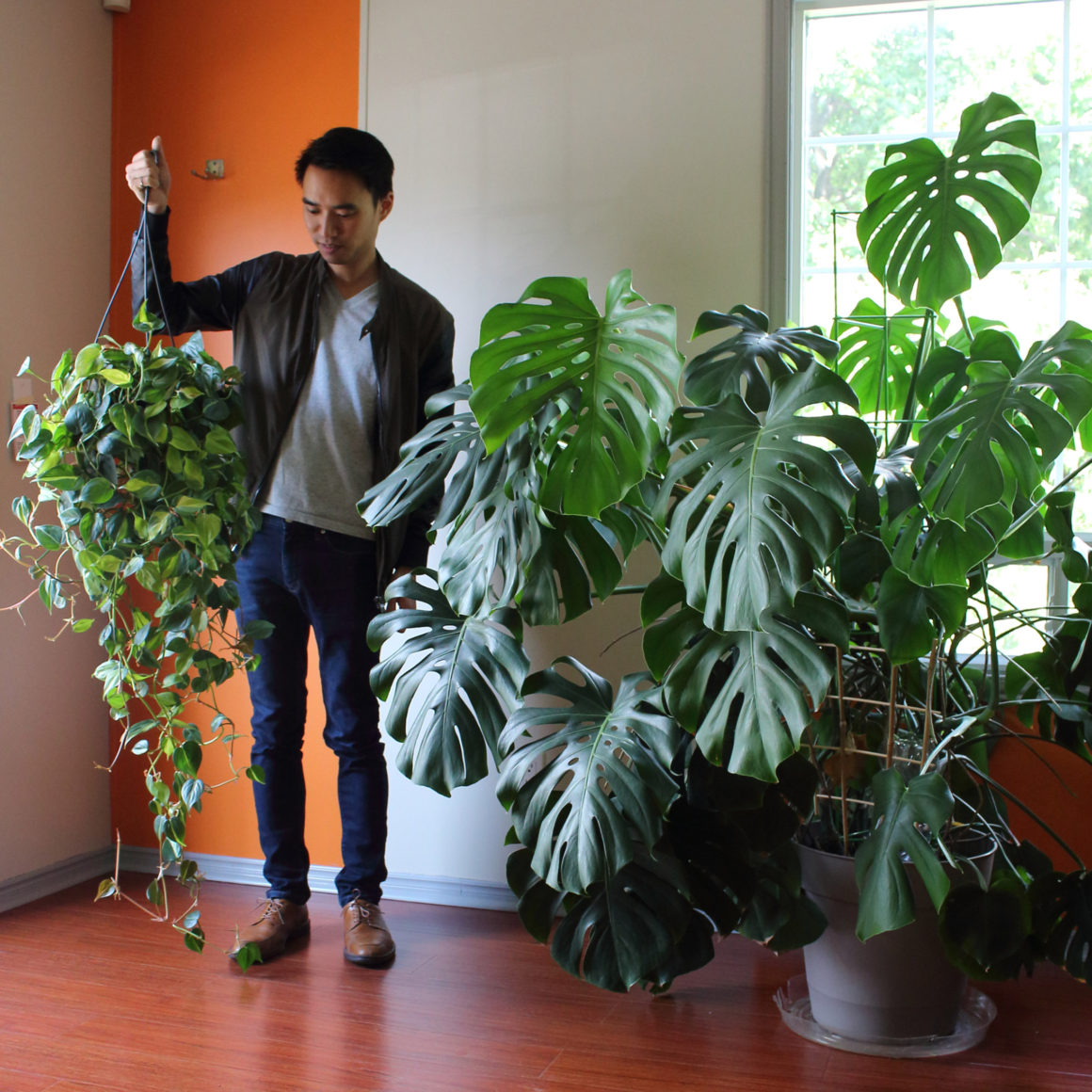
Photo by Darryl Cheng
Cheng is able to tell when his plants need watering by how much lighter the pots become. Morris sticks a finger into the soil of her pots. Steinkopf inserts a stick to the bottom of large containers.
While Morris prefers to let plants drink what they need from the bottom upwards, she has no qualms about top-down watering. “Just pour the water slowly enough to reach everywhere before it drains out,” she says.
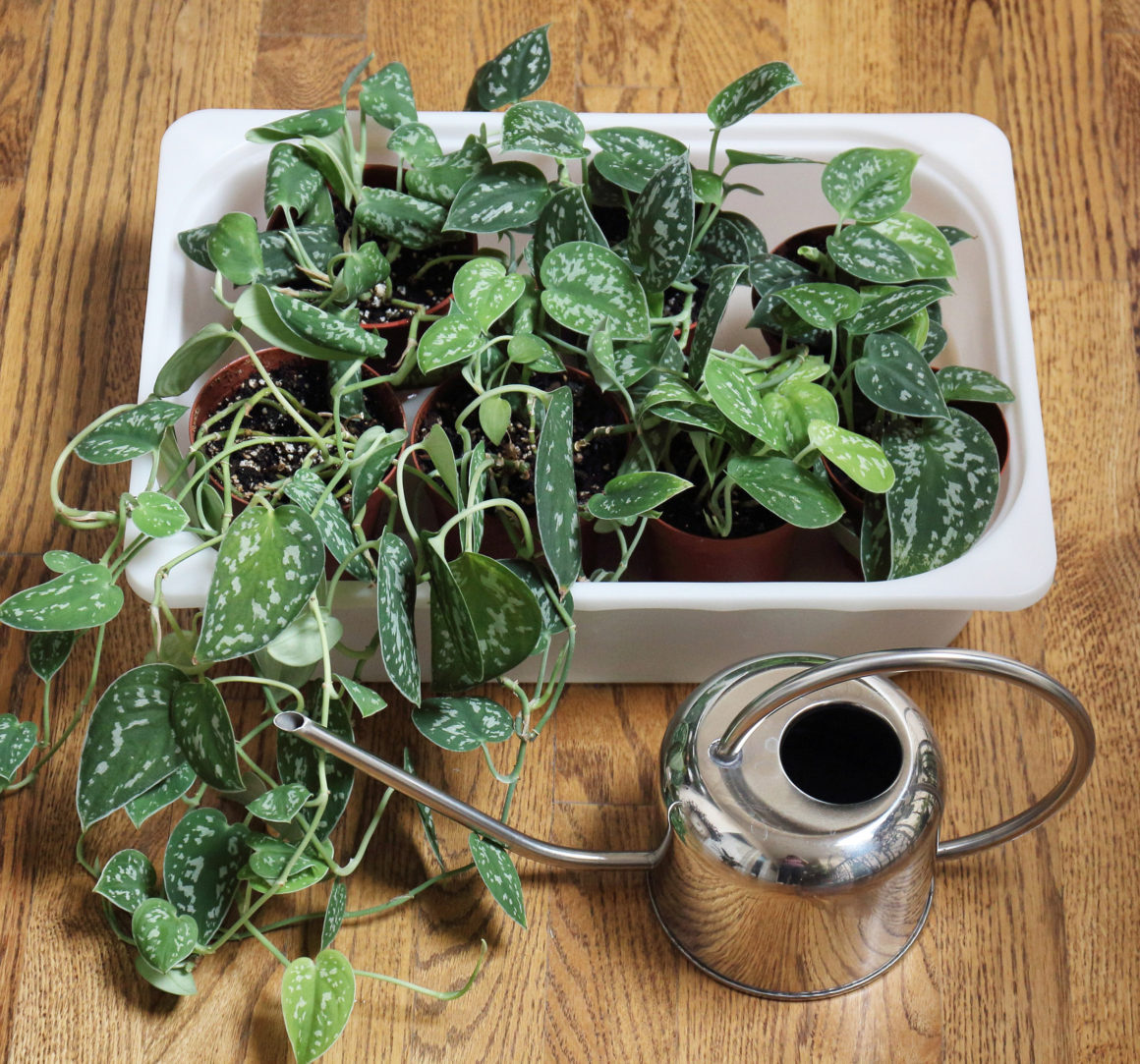
Photos by Darryl Cheng 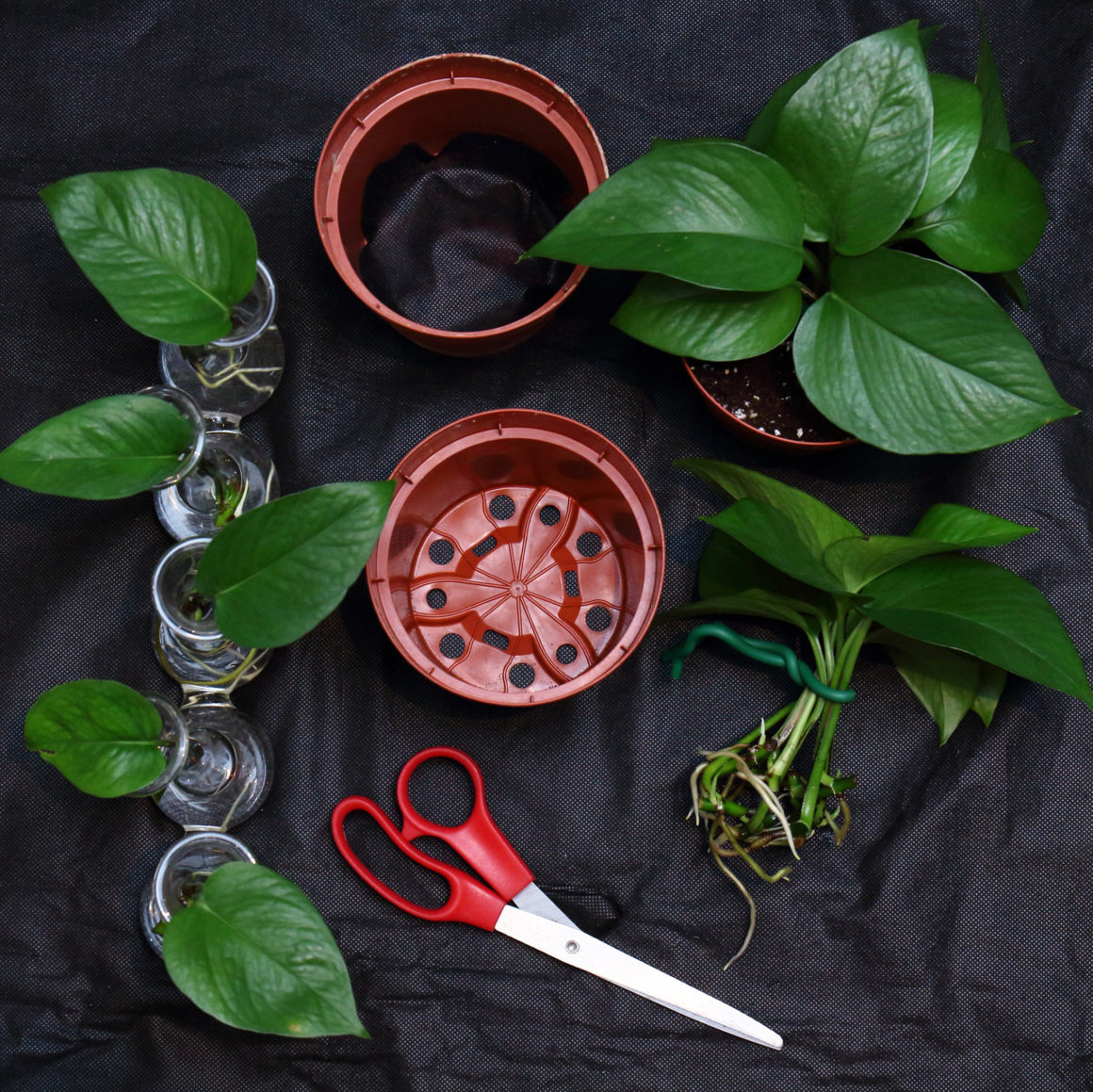
Pots with drainage holes offer greater success. “Otherwise, you have no idea whether the bottom is getting enough or too much water,” Steinkopf explains. “And don’t put rocks or clay fragments inside the base: they hinder drainage and shorten root columns.”
Try placing ferns and palms on saucers filled with pebbles and water for additional moisture. “Small humidifiers also work,” Steinkopf says, adding that spray-bottle misting is rarely sufficient.
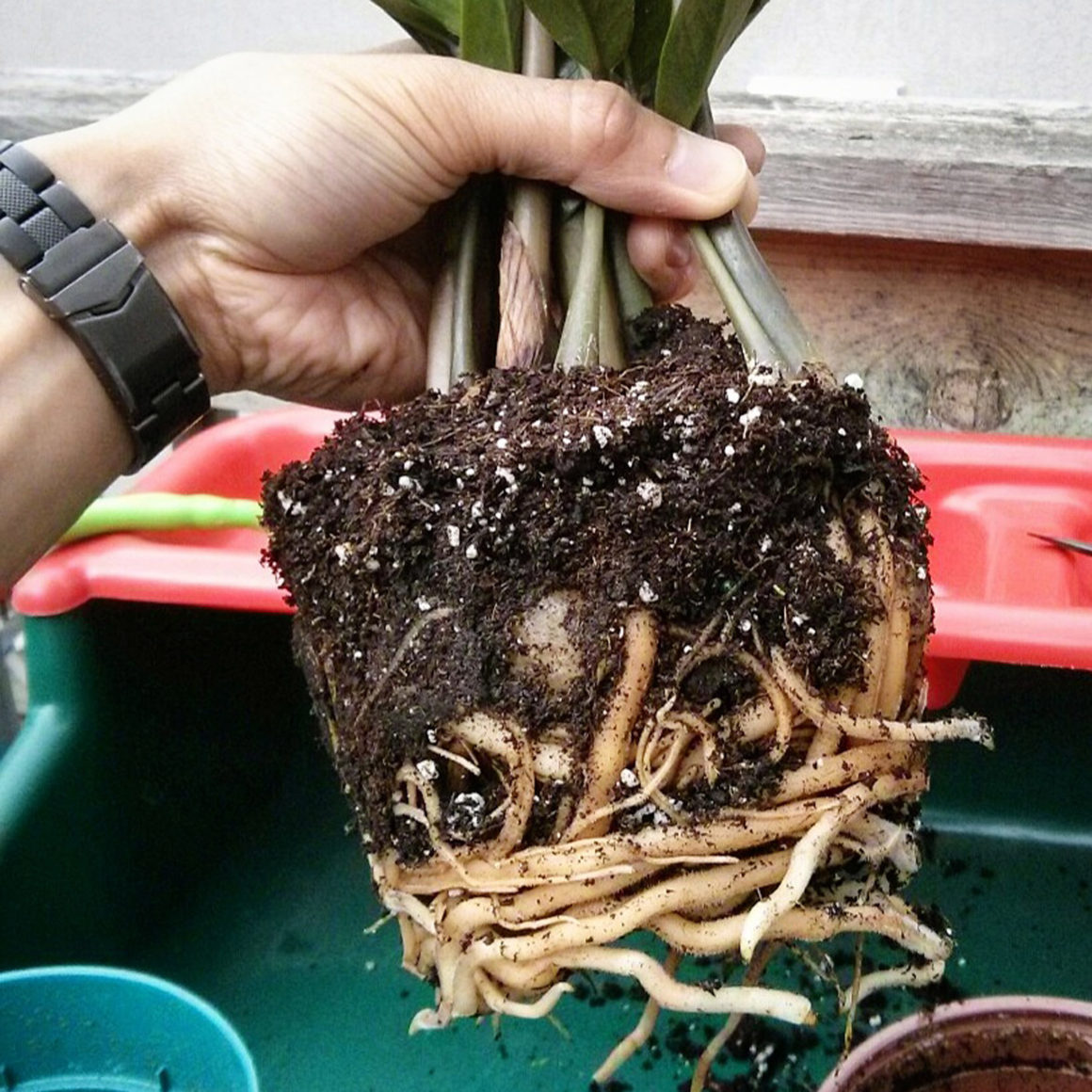
Photo by Darryl Cheng
Fertilizers support rather than encourage growth. “Only add some if you see abundant new foliage,” Cheng advises.
He notes that interior-scapers top-dress plants in huge pots, replacing some topsoil to provide fresh nutrients. “Then you only have to re-pot these every three to five years.”
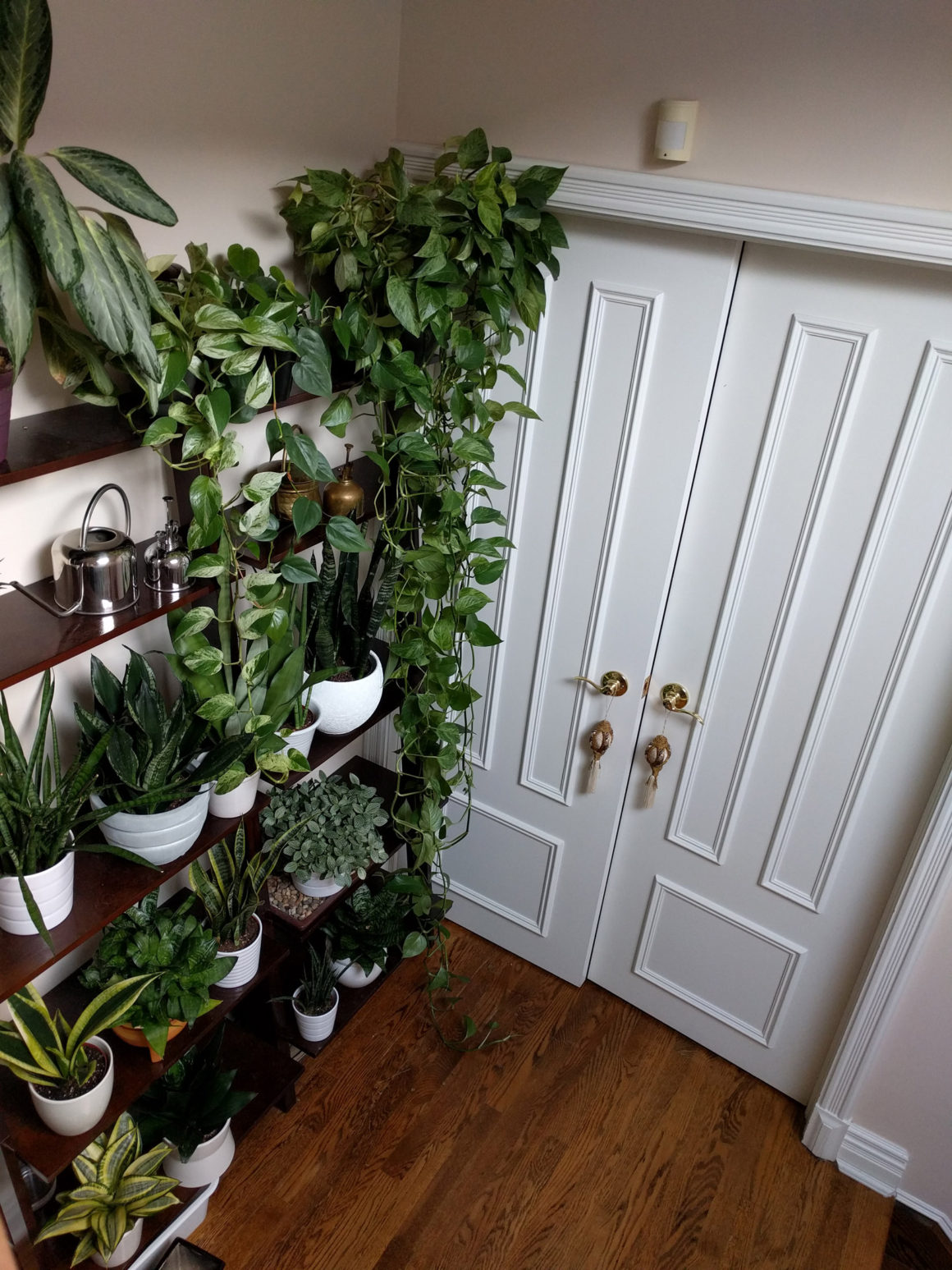
Most potting mixtures contain little if any real soil these days. “So if you see the potting media overly flaking or clumping, it might be time to replace it,” Steinkopf says.
Increase the pot only to the next available size. “If you put a plant in a large pot expecting it will grow into that space, all that additional moisture will cause its roots to rot,” Steinkopf warns.
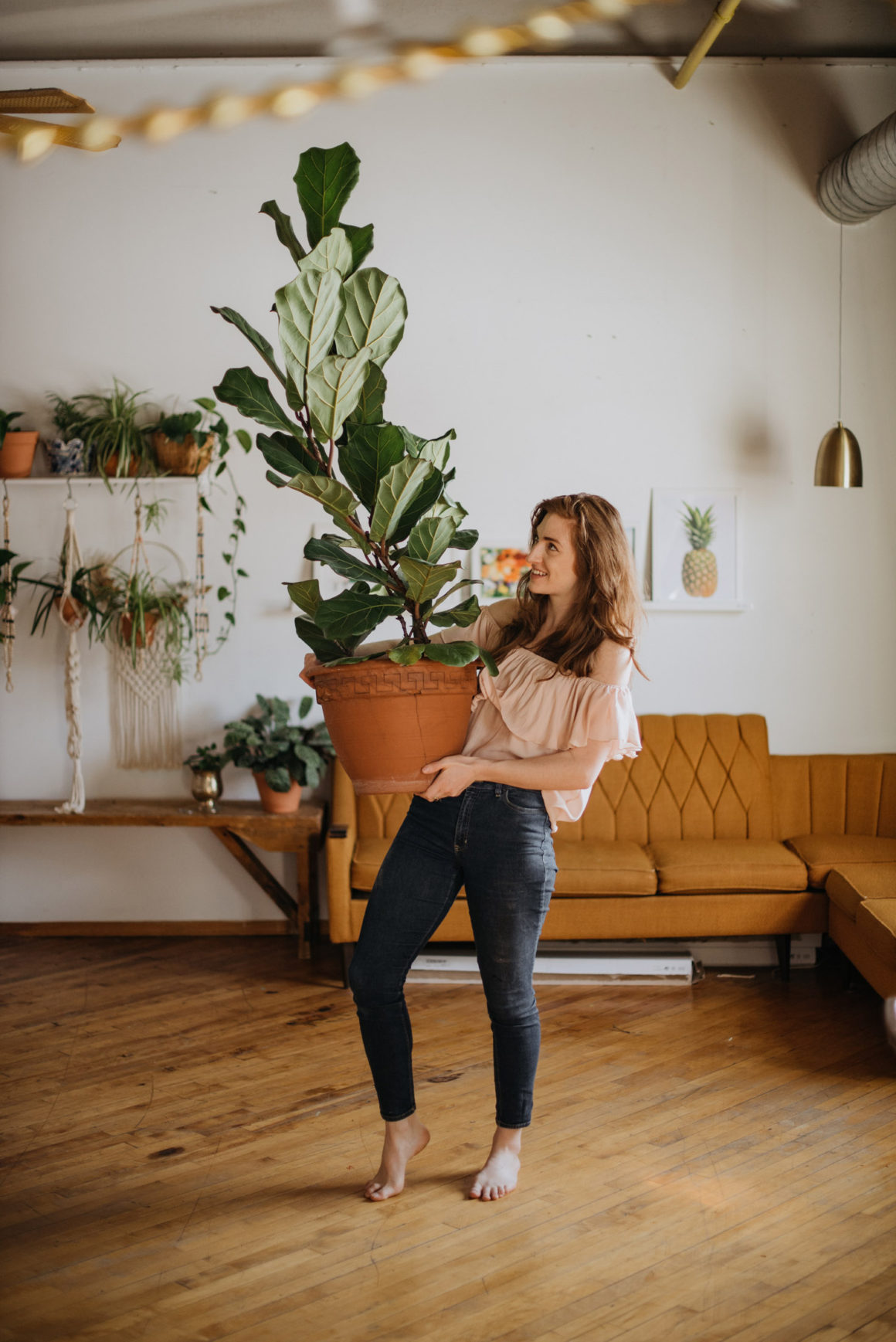
Photo by Kimon Kaketsis
Morris, who loathes repotting, notes that most plants thrive in their original containers for a year or two. “If the roots start to force their way out the bottom, or the plant is beginning to tip over, then it’s time for a larger home.”
And, sometimes, a plant just runs its course and it’s time to let it go. That’s what Morris did after 10 years with her original, adopted pothos. •

